“Even the best car in the world reaches a point where it is beyond what maintenance can do for it to consistently perform - then it’s time for a new one.”
Not the words of a savvy car salesman, but of Network Rail’s London North Eastern and East Midlands Route Managing Director Rob McIntosh, as he gazes out at the East Coast Main Line from the NR compound surrounding Doncaster Power Signal Box.
We are here to talk about the gleaming tracks located just a few metres away, but the motoring analogies continue for a moment longer before McIntosh swiftly brings the conversation back to reality, and the mammoth challenge he faces maintaining the performance of one of the country’s most critically important transport corridors.
“The ECML continues to serve its customers really well,” he says. “We maintain it, we renew it, but the assets are getting to the end of their lives and we need to plan for that. It if was a car, we would be talking about the chassis, the wiring loom and to an extent the engine. These are all bits you can change the oil in and keep going, but there comes a time when you have to buy a new one.”
McIntosh, who took over the role from the departing Phil Verster in January 2016, is in fact talking about the 40-year-old assets put in place during the electrification and route modernisation of the ECML, completed in the 1980s. Signals, cabling, power supply equipment and overhead wiring are all now reaching the end of their design lives, and increasingly beginning to show their age.
But with all eyes currently on NR’s painfully prolonged exertions to energise the Great Western Main Line, and the promise of flagship multi-billion-pound new build projects such as East West Rail and HS2, McIntosh feels that the day-to-day operational issues have been rather neglected of late.
The ECML RMD has his fair share of headline-grabbing capacity enhancements projects lined up for delivery on his own patch in Control Period 6 (April 1 2019-March 31 2024), but feels they may well fail to live up to expectations unless more fundamental issues are looked at as well.
Schemes are planned to remove major bottlenecks at the King’s Cross and York North station throats, while reinstating a fourth track between Woodwalton and Huntingdon and putting in a flyover at Werrington will also help raise punctuality on the Anglo-Scottish route, to levels never previously seen. But all will be in vain, he adds, if additional investment is not forthcoming in other areas.
“I think people have been too focused on enhancements to deliver capacity, without taking a step back to consider the state of assets in between and if they can deliver the service level performance that we need.
“We’ve been talking too much about enhancement and not enough about the infrastructure and its resilience. We need to take a step back and realise that the infrastructure is 40 years old and we’ve had some great use out of it. We’re still looking after it, but there comes a point where the underlying asset will continue to deteriorate.
“The VTEC franchise has to hit 90ppm in its last two years (2021-23), and it would seem naive to think that we’re going to deliver that without a significant level of investment in the assets.”
He believes the cost of doing nothing will be unacceptably high, as after five years of a declining trend in service-affected failures caused by trespass, vandalism, fatalities and faulty infrastructure, the rate has recently begun to plateau.
Schedule 8 payments made to compensate operators for the loss of track access when NR is liable are already more than £10 million over budget on the ECML for this financial year, while the budget for renewals is also being heavily squeezed. By raiding this finite pool of cash to fund unbudgeted repairs to failing infrastructure, McIntosh has been forced to postpone scheduled renewals and must spread his resources more thinly.
He adds: “By taking £20m out of my renewals budget and applying that to overhead line now means that another piece of renewal won’t happen, because we operate in a cash-constrained environment and I have to make a decision for where the need for investment is greatest. You can see that costed volumes of renewals are trending in the wrong direction compared with ten years ago.
“My predecessor was also a big champion of looking at asset management, but we’ve been talking too much about enhancement and not enough about resilience.”
Further supporting his call for increased investment is the scheduled arrival of new trains, as VTEC’s ageing fleet of HSTs and Class 91s begin their phase-out in favour of new Intercity Express Programme (IEP) bi-modal trains from 2018.
McIntosh points out that in 2002, the arrival of Virgin Trains’ fleet of Class 390 Pendolino ‘tilting’ trains on the West Coast Main Line was accompanied by a full route modernisation completed in 2008. This not only increased line speeds and removed bottlenecks via extensive remodelling and four-tracking, it also brought about the renewal of existing assets such as the power supply originally installed in the 1950s and 1960s. He would now like a similar commitment from NR for his own route.
“There’s a new fleet of IEPs coming for VTEC and Hull Trains, and DMUs for Grand Central, but we’re going to try and run them on the same infrastructure for a period of time. If you compare the ECML with other main inter-city routes, the GWML has a well-documented upgrade going on at the moment, as does the Midland Main Line, and the West Coast upgrade took place in the 2000s, which amounts to several billion pounds of investment.
“Even though the WCML was subject to some very expensive enhancement programmes, they also made significant investment in renewals. In CP3, for example, they invested over £2.5 billion on renewals alone, doing things like reconfiguring power supplies for the overhead line and signalling systems. The ECML has seen nothing like that because we’ve been doing our best to patch and mend.
“That investment in the WCML is now forming the backbone of the currently brilliant performance they have. I’ve discussed it at length with my colleague Martin Frobisher, and we’re in agreement that we can do things a lot better here.”
In addition to jeopardising any performance and reliability gains offered by new rolling stock, McIntosh fears that NR’s Digital Railway programme will struggle to squeeze out extra paths on the heavily congested ECML via the introduction of moving block signalling, if the performance of underlying infrastructure remains in question. Pressing ahead with a complex technological overhaul of signalling without first addressing ageing power supply or unresolved track issues is a recipe for more delay minutes, caused by the imposition of outages or temporary speed restrictions.
He adds: “Digital Railway allows you to run more trains together, but if the associated infrastructure around that isn’t able to reliably move the trains around then you won’t see any benefits. When London Underground implemented it on the Victoria, Jubilee and Northern lines it also made significant investment in its track, power supply and third rail systems, because the signalling will only be as good as the infrastructure around it.”
So what can be done to improve asset reliability?
At the very top of McIntosh’s wish list is to undo the legacy of British Rail’s choice of mast design when the ECML was electrified in two phases between 1975-78 and 1984-91.
With less money from the Department for Transport to spend than when the WCML was electrified two decades earlier, vertical masts were spaced more widely apart to reduce costs, and a more lightweight headspan system installed that holds up the catenary and contact wires using tensioned cables rather than an overhead span of steel connecting the two masts. This has made the East Coast route far more susceptible to the wires coming down during high winds.
But there are also still a large number of level crossings on the ECML that have the potential to cause delays. And the effectiveness of lineside fencing is also a problem, as demonstrated by the ease with which hundreds of enthusiasts were able to trespass on the line during Flying Scotsman’s return to main line running on February 25 2016, after a ten-year refit.
“The WCML doesn’t have as many span wires as we do, and they are often cited as a weakness because of the dynamics of the system. But I have an issue when people talk about the overhead line equipment being done on the cheap because it wasn’t - it was designed to the cost that was available and we’ve had 40 years of use out of it.
“I don’t think we need to put new piles in the ground because we’ve developed a concept called ‘portalisation’ of the headspan wire which we’d really like to roll out. That will avoid the need for new piles, which is what has really hurt the GWML project. What we want to do is put a new piece of steel between the two vertical masts, which will be quicker and cheaper.
“Another dynamic is that you can guarantee that when HS2 is built, the one thing they won’t have is level crossings. In this day and age we cannot have people and vehicles crossing a 125mph railway - it’s a flawed principle on an increasingly used piece of railway. The cost of closing them is estimated to be £300m, and we simply haven’t been able to secure that kind of money.
“Finally, trespass and vandalism is a big cause of performance issues. If you drive up the WCML you’ll see that part of the modernisation programme there was to put in palisade fencing all the way up to the Borders. South of Peterborough we still have post and wire fencing, and our remit has been to maintain what’s there, and not to renew it with more robust fencing.”
McIntosh estimates that based on what was done to the WCML a decade ago, he would need between £2bn and £4bn, and that given the scale of the task renewing infrastructure on a line almost 400 miles long, such works would need to span CP6 and CP7 if given the go-ahead.
In the shorter term, McIntosh would like to see funding released, and ring-fencing for his team to flesh out the proposals and fully cost them to assess their feasibility. Only then can the more intractable problem be addressed of finding up to £4bn, when NR could possibly see its publicly-funded expenditure in CP6 slashed from the £38.3bn it was handed by the Treasury in 2014 for CP5.
He is hopeful of finding an alternative way, however, and that the renewal of infrastructure on the ECML is chosen as a vehicle to explore the delivery of the central recommendation of the Shaw Report, which advocated the introduction of third party external funding when it was published in March 2016.
He concludes: “What we’d really like to do is secure some funding in the short term to develop some proposals for what we can achieve, and secure some funding to create a dedicated project team with the train operating companies and other stakeholders, so we can develop a scheme that we can then go and secure large-scale funding sources for.
“It is a question for our funders at NR. There is talk about attracting external funding into the industry, and I think the ECML could provide a genuine opportunity to do that. But that would require a restructuring of how NR is put together and funded, how franchises are put together, and how the revenue flows go. To attract investment there has to be something in it for investors and an attractive level of risk, but the current frameworks we work under are prohibitive to that.
“This is an opportunity to look at some aspects of the Shaw Report and get on with it. NR shouldn’t be precious about it and operators shouldn’t be precious about it, because it’s about meeting the needs of our customers and passengers.
“If we want external investment to be a real option then we have to be willing to make some really difficult decisions around that framework.”


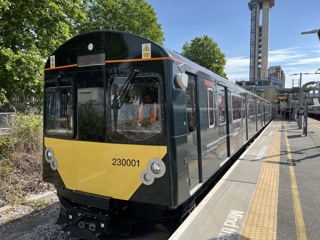
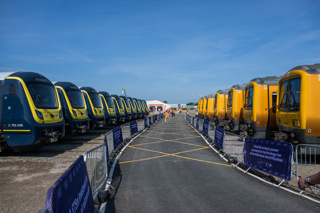
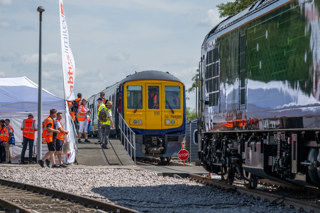
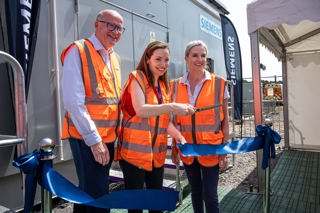
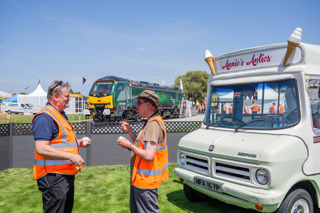





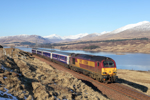


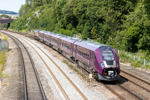


Login to comment
Comments
No comments have been made yet.